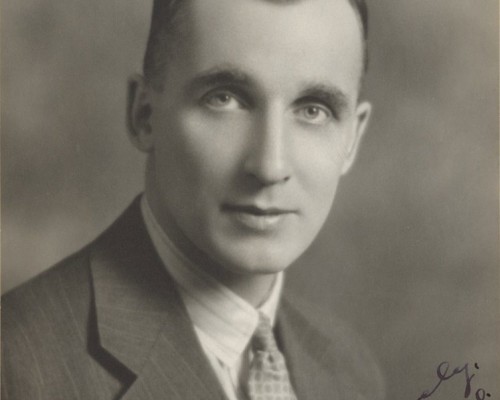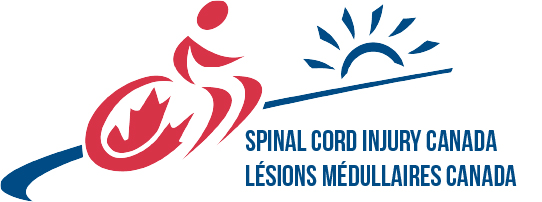The Dr. E.H. (Harry) Botterell Story

The following story is historical fiction, based on research from many different sources. Thank you to all of those who documented Spinal Cord Injury Canada's history.
It is 1939, and I am so excited! I have travelled here to Montreal to present my research findings at the Canadian Medical Association meeting. I will be speaking about my patients with paralysis. I know I am a junior neurosurgeon, and I’ve only been with the Toronto General Hospital for three years. Still, I also know my findings are life-changing! I teach neurophysiology at the University of Toronto, and my students have certainly been impressed with the accomplishments of my patients.
I have worked with three different men. Each one was paralyzed when I first met him. We were not afraid to try new ideas. And you know what? The new treatments such as skull tong traction and Dr. Monroe’s Tidal Irrigator for the bladder have worked! And simple changes such as moving the patient regularly to avoid pressure sores and eating healthy food, have improved quality of life. I even have film footage of these men now walking, biking, working, climbing stairs, voluntarily urinating, and driving a car! I barely believe it myself, but it is true! I can’t wait to tell other neurosurgeons about what we have been doing at the Toronto General.
Obviously, I didn’t do this all by myself. There is a team of health care professionals that I have trained. We offer organized care for each patient. Our goal is to get the person out of the hospital and back participating in the community. It took time, but this approach has worked!
It is now 1940. I am a Major with the Canadian Army Medical Corps. I have been asked to help establish the Canadian Neurological Hospital in Basingstoke, England, with other doctors from the Montreal Neurological Institute. I willingly take on this task. Here, we will receive soldiers and civilians with head, nerve and brain injuries.
In 1942, I receive my first military patient with a spinal cord injury. He is a Lieutenant named John, and I grow very fond of him. He is a determined man and seems to be very well-connected back home in Canada. We often talk about the work I was doing before the war with people with paralysis.
There is no rehabilitation for people in Canada after being injured, and I believe that patients must get a wholesome chance at recovery. This means exercise routines to strengthen muscles that still work. It means learning how to transfer from wheelchair to bed or any other sitting surface. And equally important is learning about self-care techniques. This is the approach I want to take with my patients when I get back to Canada. My colleagues here in England talk about sending their men to homes to stay for the rest of their lives. I know we can do better for our veterans in Canada. I worry what will become of veterans like John.
I tell John that presently no programs or services exist in Canada to support people with spinal cord injuries. Injured civilians are told they have up to 4-5 years to live and are sent home to their family or to an institution for invalids where they will die. With more veterans returning to Canada with spinal cord injuries, I say to John that now is the time to push the government to provide these programs and services. Canada wants to treat its veterans well.
I ask John if he will work with me to help veterans and civilians live as full a life as possible. This includes regular things like living in the community, finding meaningful employment, getting married, and having children. He agrees with me on the need for this work, but I worry he is becoming depressed. He has overcome so much. I hope I can convince him to unite people with spinal cord injuries back home. To get the support that people with spinal cord injuries need will involve the effort of many.
John is shipped back to Canada in 1943. He promises to keep me updated on what is happening for people with spinal cord injuries. When I first hear from him, he is at the Montreal Neurological Institute, and he realizes what I said is true. There is no rehabilitation for people with spinal cord injuries. Luckily, he meets a person named Jimmy Darou, who has lived with paraplegia for many years. Jimmy shows John various exercises to build up his strength. He teaches him what he has learned about living independently with a spinal cord injury. This is a very positive friendship for John.
John moves to Toronto to be closer to family. He regularly visits Christie Street Military Hospital to share camaraderie with the men. John and I agree that we need a separate place for rehabilitation for people with spinal cord injuries. People with new injuries need time to adjust and adapt to living with their new normal. We don't want another hospital. We want a place where the rules are few, and it feels homey. John has the support of a family friend, Lew Woods, to help lobby the Department of Veteran Affairs to support such a place.
January, 1945 is a busy month. I return to Toronto to be the Chief of Neurosurgery at Christie Street Military Hospital. I am so disappointed, and yet not surprised, when I see the men for the first time. They are all in bed, and their morale is low. The staff’s expectations of them are lower still. Some of them have actually gotten worse since I saw them in Basingstoke! This will change!
I move the spinal cord injury wing down to the first floor so getting in and out of the building is easier. By mid-month, I have Dr. Monroe from Boston visit the hospital and he teaches us about gait training, which is walking with crutches or calipers as they are known. I begin building a supportive staff team by explaining the goal of eventual full participation in the community for each patient. I encourage John to continue visiting the patients and talk to them about uniting and organizing their efforts.
Luckily John and Lew have managed to secure a building for rehabilitation, and the sale went through on New Year’s Day. We have decided to call the place Lyndhurst Lodge as it is on Lyndhurst Avenue, and we want more of a home-like setting than a hospital setting. The first 10 men move into the facility on January 15, even with the elevator not working yet! John hires the support staff. We hire Dr. Albin Jousse in March, who is well qualified to be the Medical Director. Al has a disability himself and walks with crutches, so we believe this will help him connect with the patients.
In February, we get our first shipment of folding wheelchairs for the men paid for by the Government of Canada, thanks to John's lobbying.
In the spring, many men are sick with serious bladder infections. They will die if we don’t act. I tell them about a new drug called streptomycin that has not yet been tested on humans. It was a last resort, and I offered them the option. The men went for it. For 10 days straight, every eight hours, I inject them with the medicine. I’m happy to report that every last one of them got better!
By May 1945, we know officials are noticing how effective our services are. In August, John, Al and I travel to Ottawa to meet with the Department of Veterans' Affairs. The end result is that everyone agrees that four centres are needed across Canada to treat veterans with spinal cord injuries. Shaughnessy Hospital in Vancouver is assigned to treat patients from BC and Alberta. Deer Lodge in Winnipeg will treat people from Saskatchewan, Manitoba and Northern Ontario. Lyndhurst Lodge will serve the rest of the patients in Ontario. Ste. Anne de Bellevue, outside of Montreal, will treat patients in Quebec and the Maritimes.
I work at Christie Street Military Hospital until its closing in 1949. People with new spinal cord injuries are now going to the just-opened Sunnybrook Hospital.
I go on to be the Head of Neurosurgery at Toronto General Hospital, then the Dean of Medicine at Queen’s University, and then the Faculty of Health Sciences' Vice-Principal. I am rewarded for my life efforts with the Order of the British Empire and the Order of Canada. Queen’s University also names the Medical Science Building Botterell Hall after me.
